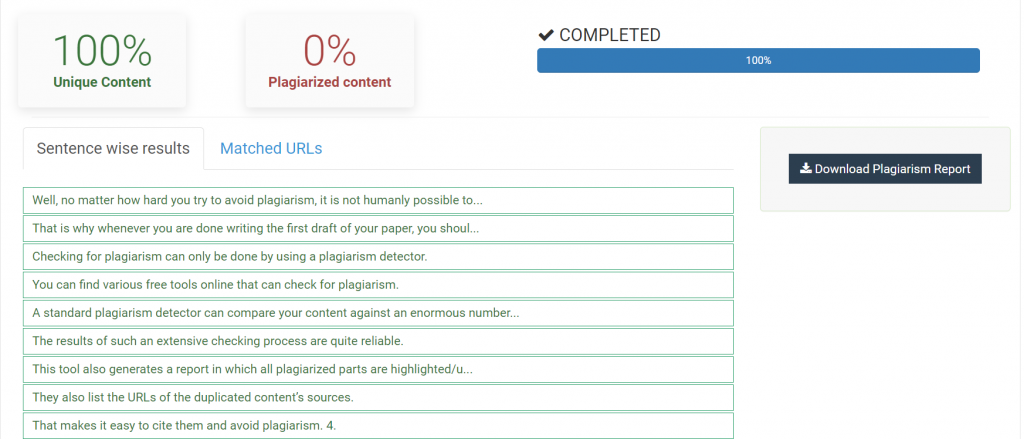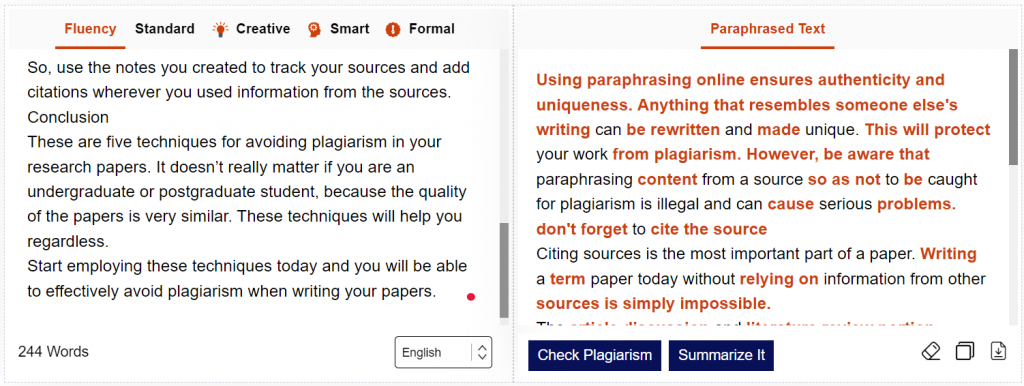Undergraduate and postgraduate students may be required to write research papers throughout their degree. These papers are not like normal assignments that can be done in a couple of days or a week. These require lots of in-depth research.

Additionally, they are also required to be sufficiently unique. There will be no plagiarism in these papers beyond a certain amount (usually less than 10%). However, there are many ways in which a student can unknowingly, or mistakenly commit plagiarism in these papers. This can result in the rejection of these papers and in severe cases there can be other consequences as well.
In this article, you will learn some tips to find plagiarism and remove it if it does pop up.
5 Tips for Avoiding Plagiarism
These are five tips for dealing with plagiarism when writing a research paper.
1. Conduct Research from Multiple Sources
Before you begin writing a paper, you have to conduct some research first. But this is the first stage of avoiding plagiarism as well. If you conduct research from many different sources instead of a few, then you reduce the chances of committing plagiarism. But how? The answer is quite simple.
When you conduct research from a smaller pool of sources, you tend to get a biased view of the subject. If you proceed with your paper based on that research, the same bias can seep into your work. People unconsciously use similar wording as well. All of that combined shows up as plagiarism.
If you research from many different sources, then you don’t develop any bias. That’s because you get to see the subject from many different points of view. As such, you can form your own unique opinions on it, which naturally results in unique writing.
2. Keep Track of Your Sources
Using many different sources to conduct research has a drawback; you can forget which information and data you got from which source. This is bad because it can result in accidental plagiarism due to incorrect citations.
So, it is necessary to keep a diary or something of the sort, to keep notes. You can create a table that lists all your sources and shows which ideas and information you got from them. That is one way of tracking your sources.
In the end, this helps you prevent accidental plagiarism by helping you cite correctly.
3. Use a Plagiarism Detector
Well, no matter how hard you try to avoid plagiarism, it is not humanly possible to avoid it in its entirety. That is why whenever you are done writing the first draft of your paper, you should check it for plagiarism.
Checking for plagiarism can only be done by using a plagiarism detector. You can find various free tools online that can check for plagiarism.

A standard plagiarism detector can compare your content against an enormous number of online sources. The results of such an extensive checking process are quite reliable.
This tool also generates a report in which all plagiarized parts are highlighted/underlined so that you can edit or remove them at your convenience. They also list the URLs of the duplicated content’s sources. That makes it easy to cite them and avoid plagiarism.
4. Rephrase if Required
Sometimes you may reference information or data that cannot be attributed to anyone, i.e., it is considered “widely known” or it is public domain.
In this case, it is not considered plagiarism if you do not cite it. However, it is still wrong to use the same wording as someone else to describe it. So, always make sure to utilize a rephraser online before you finalize your paper to avoid plagiarism.

You can surely attain reliability and uniqueness when you employ a rephraser online. You can paraphrase anything that is similar to other people’s writing and make it unique.
In this way, your work remains plagiarism-free. Be warned though, paraphrasing stuff from a source to avoid getting caught for plagiarism is illegal and can land you in serious trouble.
5. Don’t Forget to Cite Your Sources
Citing sources is the single most important part of a paper. It is downright impossible to write a paper today without having to use any information from other sources.
The “Discussion” and “Literature Review” parts of the paper require you to discuss the sources that you have obtained data from. They also require you to discuss how you reached your conclusions and ideas from those sources.
As such, it is mandatory to cite those sources or else your work will have no credibility. And it will also be considered plagiarism if you use the data/information from a source and don’t cite it.
So, use the notes you created to track your sources and add citations wherever you used information from the sources.
Conclusion
These are five techniques for avoiding plagiarism in your research papers. It doesn’t really matter if you are an undergraduate or postgraduate student, because the quality of the papers is very similar. These techniques will help you regardless.
Start employing these techniques today and you will be able to effectively avoid plagiarism when writing your papers.

